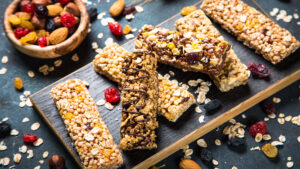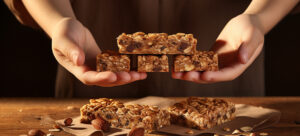In the competitive world of snack bar manufacturing, the process of coating plays a critical role in attracting consumers and setting products apart from the competition. Innovative coatings not only provide unique flavor combinations but can also enhance the texture and appearance of snack bars. This evolution in the snack bar industry has introduced a new realm of possibilities for manufacturers seeking to satisfy the ever-changing demands of health-conscious and flavor-driven consumers.
One game-changing aspect of snack bar coatings is their ability to improve the overall eating experience. With the help of advanced technologies and ingredient innovations, manufacturers have been able to create coatings that make snack bars more appealing visually and delicious in taste. This can be attributed to the incorporation of edible films and coatings that allow for a wide range of customization. Furthermore, these coatings can be produced using more sustainable and environmentally friendly materials, which is an important consideration for modern consumers.
As snack bar companies continue to invest in research and development, the role of coatings in shaping the future of this industry cannot be overlooked. With trends leaning towards the fusion of familiar flavors and unexpected new combinations, the importance of coating in snack bar production offers many exciting avenues to explore. The sweet secret behind these coatings is not only making snack bars more enticing but can significantly impact consumer preferences and purchasing decisions.
Enhancing Flavor Profiles
Innovations within the snack bar industry have taken coatings to the next level by incorporating a variety of flavors and ingredients. The use of compound coatings, for example, has expanded to create more versatile flavorings in products. Incorporating protein and other nutritional ingredients helps cater to health-conscious consumers desiring wholesome yet tasty snacks. Moreover, the inclusion of both sweet and savory flavors opens up new possibilities for snack bars, bringing more diversity to the market.
Textural Contrasts
The incorporation of different textures in snack bar coatings highly contributes to a consumer’s overall food experience. Drizzles and coatings can add layers of crunchiness or creaminess, making the product more appealing. For instance, adding nuts or dried fruits to coatings can provide a delightful crunch, while using chocolate or yogurt-based coatings can supply a smoother mouthfeel. The combination of various textures keeps consumers engaged and entices them to try new products.
Visual Appeal and Consumer Attraction
An attractive, visually appealing product can greatly influence consumer choice5. Innovations in snack bar coatings have proven to be not only delicious but also aesthetically pleasing. Manufacturers can play with colors, textures, and shapes to achieve a unique and eye-catching appearance for their products. Examples include swirls or marbling effects and contrasting colors, turning even healthier snack options into real attention-grabbers.
Improving Preservation
The use of edible coatings in snack bar production has a significant impact on extending shelf life. By forming a barrier, coatings can minimize the rate of moisture and solute migration, reducing the chances of spoilage and keeping the snack bars fresh. Additionally, these coatings can help maintain the sensory attributes of snack bars, such as the appearance, aroma and texture. This is primarily due to the ability of edible coatings to reduce gas exchange, respiration, and oxidative reaction rates.
For instance, choosing the right combination of biopolymers and additives, such as lipids, proteins, and polysaccharides, can provide an effective barrier against moisture and gas exchange, as well as improve the mechanical properties of the coating. The inclusion of nanoparticles can further enhance the coating’s performance, leading to greater preservation.
Production Efficiency
Incorporating edible coatings into the snack bar production process can lead to significant improvements in production efficiency. Due to their thin nature, these coatings are easily dispersed in aqueous media, allowing for efficient incorporation into the production line, with minimal impact on the process itself.
The use of edible coatings reduces the need for additional packaging materials, which is a significant advantage for not only the production process but also the environment. Fewer materials involved in packaging mean less waste and lower production costs. This also strengthens the company’s commitment to environmentally friendly and sustainable practices.
In summary, the application of edible coatings in snack bar production can provide significant benefits in terms of extending shelf life and improving production efficiency. These coatings offer an eco-friendly, cost-effective, and functional solution to maintaining the quality and freshness of snack bars, while reducing unnecessary waste.





